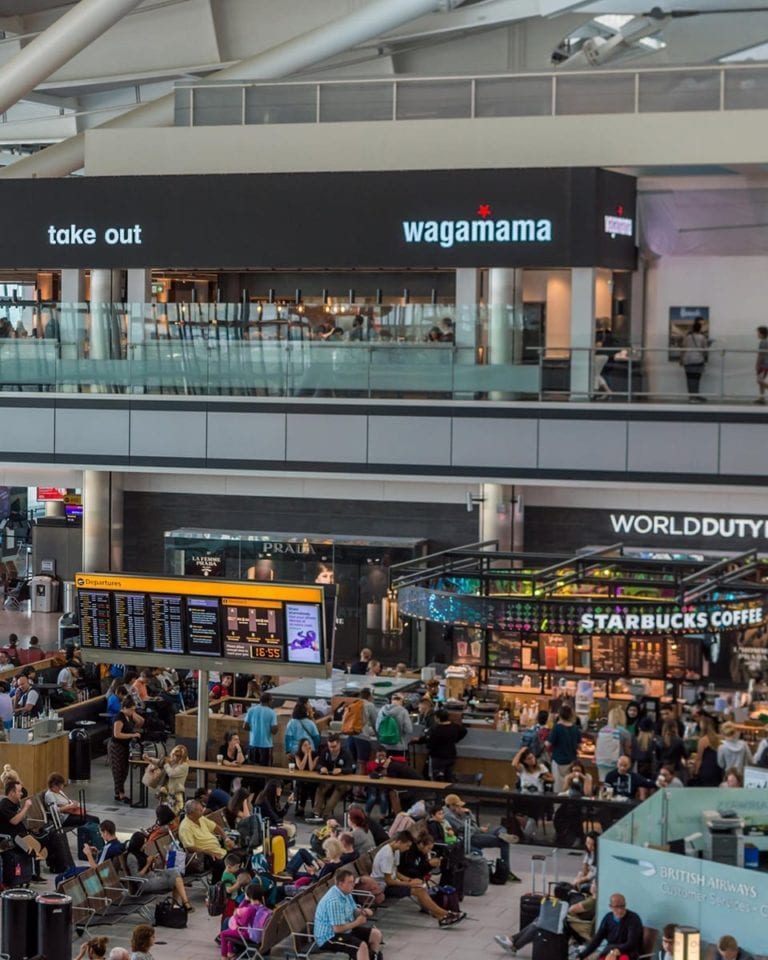Why the need to fill every waking minute with eating and drinking?
The grab-and-go culture of constant eating, anywhere and everywhere, is destroying our appetites, our health and our planet.
It’s time to get back to proper mealtimes, says food writer Andrew Webb – preferably at a table.

It’s 08:04am on the busy commuter train from the home counties into London and the chap opposite me is eating smoky bacon crisps for breakfast. It could’ve been worse. Use public transport at lunchtime or in the evening and you’re guaranteed a carriage stinking of burgers, pasties, katsu curried chicken…
The demise of dining tables in the home and canteens in workplaces, coupled with longer commutes and working hours, mean many of us are eating anywhere and everywhere: breakfast on the train, lunch at your desk, a snack in the park, dinner in front of the telly.
The phenomenon of constant eating has crept into our leisure time, too. Who hasn’t had a movie ruined by the constant rustling, crunching and munching from the row behind? It’s even worse now hot food is available in cinemas. And it’s not just food, it’s drinks too. Like toddlers with beakers, people can’t seem to do anything without one hand clasped around a paper cup of hot milk with a shot of coffee in it. There’s even a cupholder in your car these days, because, never mind safety issues, who can survive five minutes without a drink?
I once went to see the grey seals with their pups on Horsey Beach in Norfolk. One of the UK’s natural wonders was marred by a couple who felt the need to slurp coffee next to me on the viewing platform. Still, that’s not as bad as the parent at my daughter’s school who brought a coffee into church for the school carol service, then left it on the pew for someone else to clean up!
''There’s even a cupholder in your car these days because who can survive five minutes without a drink?''
But hey, it’s a free world, right? I’m just being cantankerous. This always-and-everywhere eating is annoying but it’s harmless. Well, no, actually. Obesity levels are through the roof, and a large portion of cinema popcorn can contain more than 960kcals. Plus, various studies show that eating around a dining table results in a lower BMI and better digestion – you eat less because you’re concentrating more on your food rather than the TV.

Yes, dining tables – remember them? They matter because by sitting at them we develop important things like manners, empathy and conversation skills. A 2015 study by the University of Minnesota found that adolescent girls who reported having more frequent family meals, and a positive atmosphere during those meals, were less likely to have eating disorders.
''Various studies show that eating around a dining table results in a lower BMI and better digestion''
There’s another side to this too. Always-available food needs huge amounts of single-use packaging. A drive (it’s worse if you walk) down any trunk road in the UK reveals verges strewn with litter. In 2016 Highways England picked up more than 200,000 bags of the stuff from our roadsides and the vast majority of it was food packaging. All this has a cost to the public purse, estimated to be around £40 per bag.
With our countryside littered and our oceans full of plastic, manufacturers and the government need to do more to tackle waste. And with our health at stake too, we need to do more to rein in our appetites and sit down to proper meals, at the table.
Subscribe to our magazine
Food stories, skills and tested recipes, straight to your door... Enjoy 5 issues for just £5 with our special introductory offer.
Subscribe
Unleash your inner chef
Looking for inspiration? Receive the latest recipes with our newsletter




